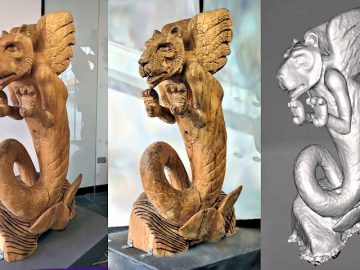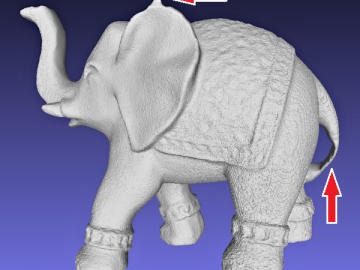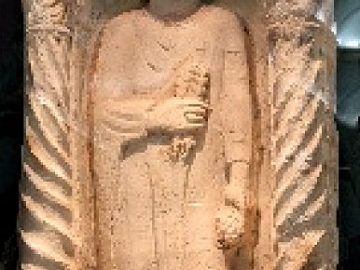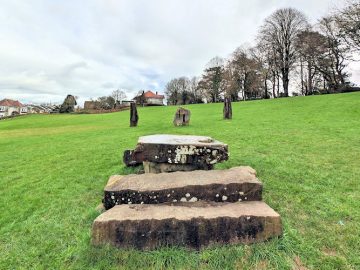Most visitors to the neolithic wonders of southwest England will have been to world-famous Stonehenge. But few of them will have heard of one of the largest neolithic circles in Europe, let alone visited, despite it being only a short distance away. And to the people who have visited, Avebury is an amazing site that shows the ingenuity of ancient people like no other.
Avebury is a henge monument, meaning it is made from an earthwork bank with a round ditch within, and contains three neolithic stone circles. A stone lined avenue (West Kennet Avenue) approaches the henge from the southeast. And if you walk the path from the National Trust car park to the village, you will most likely meet one of the most impressive stones, which I decided I could not resist taking a 3D scan of.

Quick summary of this 3D creation
Overview: A 3D scan of a stone within an ancient henge.
Location: Avebury, Wiltshire, England [map].
Date/era: Neolithic, third millennium BC.
Software used: KiriEngine, Meshmixer, Nomad Sculpt, Blender.
Intended use: 3D printing at 1:25 scale unless resized, without supports on FDM.
Related pages: Cors y Gedol, Dyffryn Ardudwy, Rhoslen Dolmen, Pentre Ifan, Carreg Coetan Arthur.
Download (non-commercial): Thingiverse, MyMiniFactory, Thangs3D.
I made the scan from square 1440 pixel video taken on an Insta360 X4 camera, dewarped and reframed from 8k footage using their Android app. I uploaded it to KiriEngine, using the option of a meshed 3D scan as part of a gaussian splat project, and was very happy with the result – the 3D geometry looked very clean and true to the shape of the stone. However, the scan is not to a true scale so I also used the iOS 3DScannerApp to make a LIDAR-assisted 3D scan that I could use to adjust the model later, in Blender, to a size closer to real life. You can see the stone, with both 3D scan meshes, below.

Once downloaded, the model was first reoriented, trimmed and roughly resized in Meshmixer. Then, in Blender I extruded the base area and filled it to make a watertight model that I imported into Nomad Sculpt, on Android, for tidying and to remove overhangs that could cause a need for supports. Finally, in Blender, I resized the stone to 1:25 scale (around 100mm tall) and zeroed the base vertices to ensure the bottom was completely flat. After that I printed it half size (around 1:50) on my Flashforge Adventurer 3C printer using some PLA+ filament. And based on the results I think a 1:76 (Hornby OO) scale model should be possible for use on railway dioramas.

The print came out pretty good with the PLA+ filament so I only needed a couple of coats of high build primer to smooth it out a bit. Then I used some grey acrylic primer and set about painting a stone effect with The Army Painter acrylics and some light tone to dirty it up a little – I find that helps quickly make it look more realistic rather than obviously painted. A coat of Citadel Technical Stormshield finished it off and, applied copiously, allowed me to apply some scatter grass to the ground areas. And who could resist a few self-adhesive grass tufts to bring it all together.
So that’s it, now every self-respecting visitor to Avebury can have their very own miniature neolithic stone as a souvenir! Assuming, of course, they have a 3D printer, the time and the inclination 🙂




